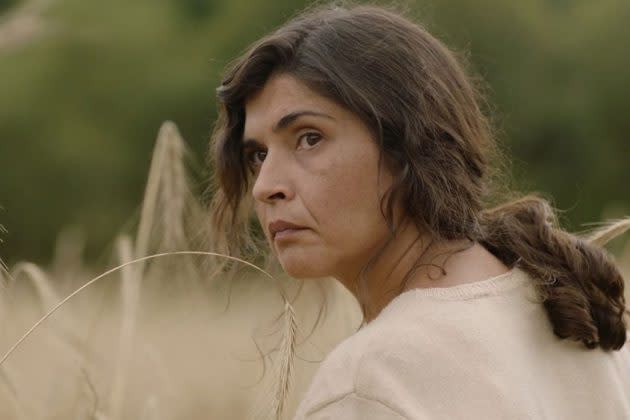‘The Rye Horn’ Review: Womanhood Is a Trial in an Earthy, Elemental Portuguese Drama

Rather than horns, they look like tiny black catkins clinging to the grains on swaying stalks of rye. These little clusters — actually a fungus known as ergot — are a disease that affects the ovaries of their host plants, but can be made into an infusion that induces abortion in women. That kind of resonance, between the natural world and the female human experience, is very much at the heart of Jaione Camborda’s second film, “The Rye Horn,” which began its festival journey in Toronto and won top honors in San Sebastian.
But as symbiotically involved with nature as the film is, particularly in Portuguese master cinematographer Rui Poças’ earthen imagery, which is so tactile you can almost feel the wet gray sand of the Galician island setting under your toes, its somber narrative is comparatively undernourished. Atmospherics can only do so much to engage with a central character (a committed, physical performance from dancer Janet Novás) this wary and stoic. And at times, in its determination to highlight the hardships of women negotiating restrictive societies which reduce them solely to their biological usefulness, the film risks something similar, outlining a heroine’s journey that begins and ends with motherhood, as the burden but also the sublimation of all womanly endeavor.
More from Variety
Venice Winner Arsalan Amiri on Censorship in Iran and Busan APM Project 'For The Girls Of The Tribe'
The elemental setting feels more ancient than its 1970s era, as Camborda’s vision of this hardscrabble rural fishing community is of a place far removed from modern attitudes, not to mention modern medicine. So the bravura opening sequence — a 10-minute childbirth scene that is choreographed and shot with unsentimental grace — introduces us to María (Novás), who is acting as midwife for her neighbor Carmen (Julia Gómez). In a sparsely furnished room, Carmen grunts and screams, paces and hunkers, and María calmly tends to her, bracing her against her own body when the baby finally emerges. Carmen’s teenage daughter Luisa (Carla Rivas) looks on with round eyes, but the men of the household — like the men of the film — are barely peripheral presences. Carmen’s husband visits briefly and her two little sons sneak a peek, but are quickly shooed out.
Herself childless, but bearing a storied scar on her belly, María lives a solitary life harvesting shellfish, regarded with suspicion by a community that seems to take her midwifery as further evidence of her vaguely witchy otherness — one interesting aside is that ergot poisoning is one of the theories mooted for the phenomenon that led to the Salem Witch Trials. Whatever the reason, there are rumors about this aloof woman, though they do not seem to concern María too much.
Meanwhile high-schooler Luisa, a talented runner who has hopes of being scouted off the island, has just had sex for the first time, an event communicated with a typical juxtaposition of the bucolic and the brutal when a dribble of blackberry juice is match-cut with the trickle of blood that connotes the end of her virginity. Some time later, she shows up on María’s doorstep seeking to terminate the resulting pregnancy, and threatening to do the job herself if María does not help her. A tragedy ensues, and María’s fight-or-flight mode kicks in. She chooses flight, making a perilous passage by boat and then on foot to the Portuguese border.
We track her journey doggedly but at a stubborn emotional remove, never really getting a glimpse inside María’s mind or heart. We don’t know whether she feels guilty about the incident back on the island and can’t discern what, if anything, she might miss about her old life. There is a very distant background buzz of Franco-era politics, in the soldiers who police the border, and in Anabela (an excellent Siobhan Fernandez), a Black Portuguese sex worker who befriends and shelters María. But even Anabela’s markers of racial and social difference are of less interest to Camborda than the fact that she is both a mother (to a baby boy) and a prostitute, a dichotomy seedily undermined when a client pays an additional fee to suckle at her lactating breast.
While the film is steeped in admiration for María’s resilience, by the time she comes to a decision about her future based on watching, in gorgeous light, some cows guide their calves across a stretch of water, the “natural” state of motherhood — as opposed to the unnatural privations of abortion and childlessness — has been celebrated to the point of beatification. Which is, despite the consummately satisfying craft on display, an unsatisfying card for the ostensibly feminist “The Rye Horn” to play, when part of the long struggle against patriarchal control over the female body has been to establish that there is so much more to being a woman — more to being a person — than our most basic biological instincts for survival and reproduction.
Best of Variety
Sign up for Variety’s Newsletter. For the latest news, follow us on Facebook, Twitter, and Instagram.

